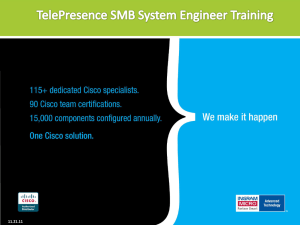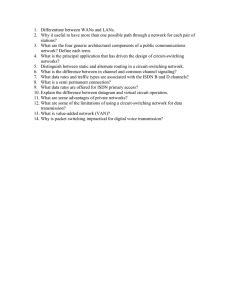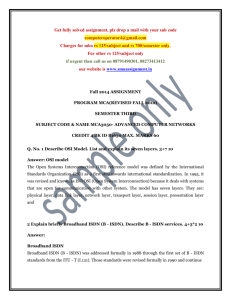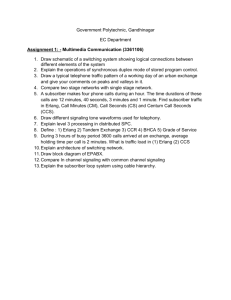ISDN Concepts Pertemuan 21 1
advertisement
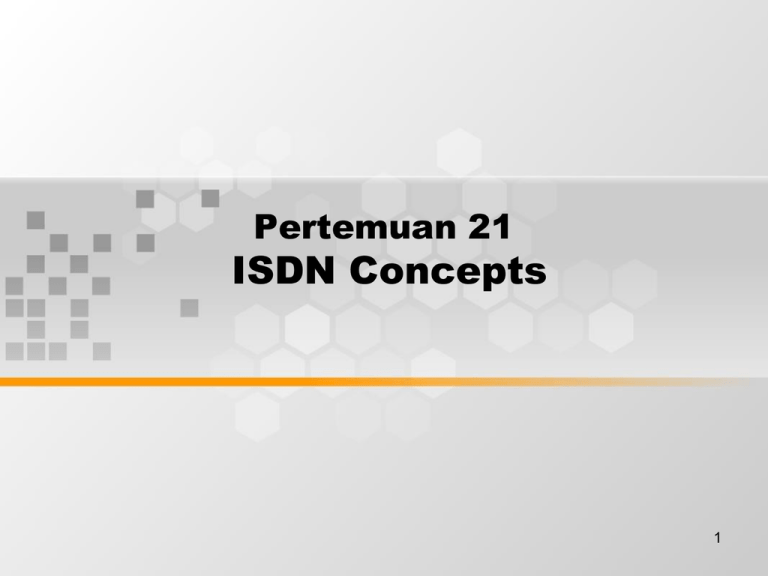
Pertemuan 21 ISDN Concepts 1 Discussion Topics • • • • • • • Introducing ISDN ISDN standards and access methods ISDN 3-layer model and protocols ISDN functions ISDN reference points Determining the router ISDN interface ISDN switch types 2 Digital Communication with ISDN ISDN Benefits ISDN Standards ISDN Access Options ISDN 3-Layer Model ISDN Physical Layer (BRI) ISDN Data Link Layer Q.931 Messaging-Call Setup Example Call Processing 1. 2. 3. 4. 5. 6. The D channel is used to send the called number to the local ISDN switch. The local switch uses the SS7 signaling protocol to set up a path and pass the called number to the remote ISDN switch. The remote ISDN switch signals the destination over the D channel. The destination ISDN NT-1 device sends the remote ISDN switch a call-connect message. The remote ISDN switch uses SS7 to send a call-connect message to the local switch. The local ISDN switch connects one B channel end-to-end, leaving the other B channel available for a new conversation or data transfer. Both B channels can be used simultaneously. ISDN Functions and Reference Points R: the connection between a non-ISDN Terminal Equipment (TE2) and a Terminal Adapter (TA), e.g. an RS-232 serial interface. S: references the points that connect into the customer switching device Network Termination type 2 (NT2) and enables calls between the various types of customer premises equipment. T: electrically identical to the S interface, it references the outbound connection from the NT2 to the ISDN network or Network Termination type 1 (NT1). U: the connection between the NT1 and the ISDN network owned by the telephone company. ISDN Functions and Reference Points BRI Reference Points Cisco ISDN BRI Interfaces ISDN Interfaces S/T ISDN Interface U ISDN Interface ISDN Switch Types
